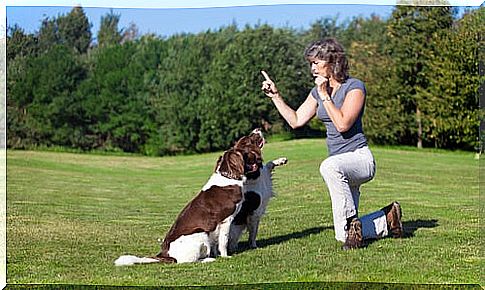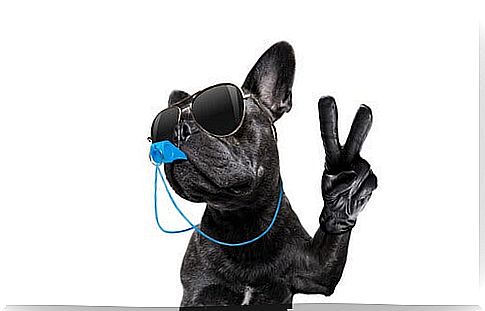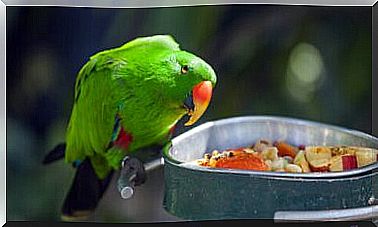Train Your Dog With The Whistle Technique

The whistle is one of the most used tools in dog training. The basic idea is to use it to get the animal’s attention, even at long distances, and thus benefit from its well-developed hearing.
What is the dog whistle?
As the name suggests, it is a type of whistle developed specifically for training dogs. As dogs are able to perceive frequencies that do not go unnoticed, the sound of the whistle can only be picked up by them, being imperceptible for people.
This is only because dogs’ hearing is capable of capturing frequencies from 20kHz to 60kHz, while we can only hear frequencies up to 20kHz. In general, ultrasonic dog whistles emit waves ranging from 25 to 55 kHz, so we can’t hear them.
However, one of the fun facts about the dog whistle is that, initially, it was created for humans. In mid-1876, Sir Francis Galton invented this device in order to test the limits and range of human hearing. At that time, the whistle consisted of a small metal tube and a reed.
Driven by his natural curiosity, Galton decided to test the hearing of other species using his invention. And that’s how he realized that dogs, especially those of smaller breeds, responded quickly and effectively to the frequency emitted by the whistle.

Benefits of the ultrasonic whistle to train your dog
Many owners wonder about the advantages of using the whistle to educate their dogs. Clearly, one of the most obvious benefits is the ability to catch the animal’s attention, even at long distances and without relying on eye contact.
Before starting the training sessions, it is essential to teach your dog to respond to your call and get him to focus on this activity. To do this, the first step is to have him come to you and pay attention to your instructions.
In addition, during walks, your dog may eventually distance further than desired, so the whistle will help you find him more easily. Or rather, the whistle will make your pet find you more easily by noticing the vibrations you emit with the whistle.
Another important advantage of the dog whistle is that it is a very simple tool to use, light and easy to carry, which makes it very practical for outdoor training sessions. It is necessary to clarify that the whistle does not cause pain for the dog, as it simply emits a frequency that is perceived by their ears.
Choosing the most appropriate whistle to train your dog
As with humans, not all dogs have the same characteristics and the same hearing ranges. Some breeds are more sensitive, like the border collie or the German shepherd, so they tend to respond almost immediately to the whistle.

Therefore, it is essential to choose the whistle that best suits your best friend’s own needs. We can highlight the following fundamental characteristics of a good whistle:
- Resistant materials: the appliance must have a rigid body, made of resistant materials, of good quality and washable.
- Consistent sound output: The whistle should make clear sounds that do not vary radically when the user blows in different ways.
- Clear vibrations : the emitted frequencies must expand over a minimum distance of about 200 meters outdoors.
Familiarize the dog with the new whistle
The first step in educating your dog with a whistle will be to familiarize him with the sounds emitted, similar to when you first start using the clicker . This process should be done in a quiet and safe place so the dog can concentrate more easily.
Next, we should blow the whistle and offer our dog a prize (a treat, for example): this step should be repeated for about 10 minutes. The goal is for the dog to understand that answering the whistle is something positive, that it generates a reward.
Also, to find out the frequencies your dog is not sensitive to, just blow the whistle very gently while the animal is sleeping. The frequencies that do not produce any reaction are not suitable for training your dog, as they go unnoticed by his hearing.









